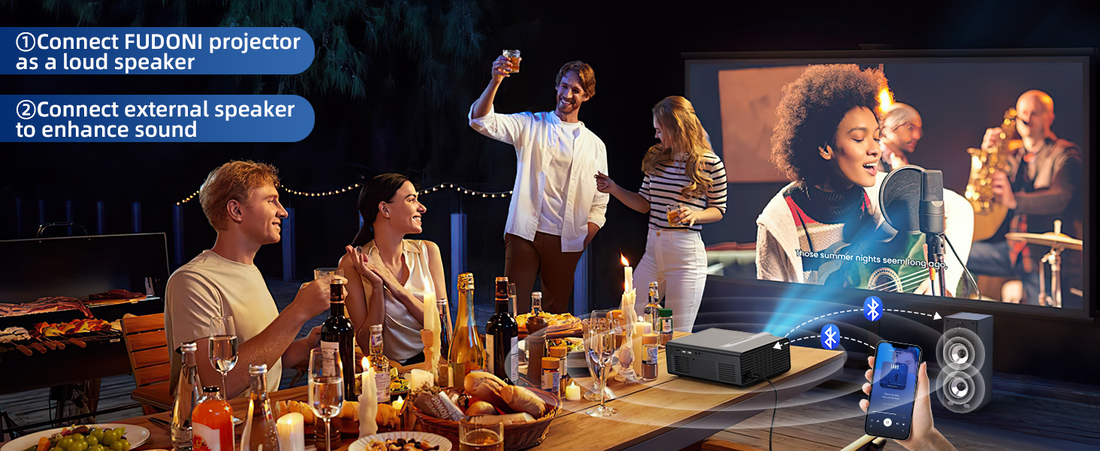Introduction
Projectors have come a long way from bulky, lamp-driven machines to sleek, multifunctional devices. But the evolution isn’t slowing down! As technology advances, projectors are breaking barriers with innovations like laser lighting, AI-powered adjustments, and holographic displays. In this blog, we dive into the groundbreaking technologies shaping the future of projectors—and how they’ll transform how we work, play, and connect.
1. Laser and LED Light Sources: Brighter, Longer-Lasting, Eco-Friendly
Goodbye, traditional lamps! Laser and LED projectors are taking over, and here’s why:
-
Unmatched Longevity: Laser projectors boast 20,000–30,000 hours of use (vs. 3,000–5,000 hours for lamps).
-
Instant On/Off: No more waiting for lamps to warm up or cool down.
-
Eco-Conscious: Lower energy consumption and no mercury (unlike older lamp models).
-
Consistent Brightness: Lasers maintain peak brightness throughout their lifespan.
Did You Know? Laser projectors now dominate premium home theaters and large venues like planetariums!
2. Ultra-Short Throw (UST) Projectors: Big Screens, Tiny Spaces
Who needs a dedicated theater room? UST projectors sit just inches from the wall to cast 100"+ images, perfect for cramped apartments or cluttered offices.
-
No Shadows: Walk freely without blocking the projection.
-
4K HDR Quality: Brands like Xiaomi and Vava offer affordable UST models with cinematic clarity.
-
All-in-One Designs: Some include built-in soundbars and streaming apps for a seamless setup.
Pro Tip: Pair a UST projector with an ambient light-rejecting (ALR) screen for daytime viewing without glare.
3. Smart Projectors with AI and Voice Control
Imagine a projector that adjusts itself—automatically. Enter AI-driven smart projectors:
-
Auto Focus & Keystone Correction: Wave goodbye to manual tweaking; sensors instantly sharpen and align the image.
-
Voice Commands: Use Alexa or Google Assistant to play movies, adjust volume, or switch inputs.
-
Content Recommendations: Built-in AI learns your preferences and suggests shows or apps.
Example: The XGIMI Horizon Pro uses AI to avoid obstacles (like wall decor) and optimize screen size.
4. Holographic and 3D Projection: Beyond Flat Screens
The line between reality and projection is blurring:
-
Holographic Displays: Startups like Looking Glass Factory create 3D holograms for education, design, and gaming.
-
Interactive 3D Mapping: Projectors combined with motion sensors let users “touch” and manipulate 3D visuals (think virtual dissection in biology class).
-
Augmented Reality (AR) Integration: Overlay digital data onto real-world objects for training, retail, or art installations.
Future Vision: Surgeons might soon practice procedures via 3D holographic projections!
5. Sustainability and Solar-Powered Projectors
As eco-awareness grows, brands are rethinking design:
-
Solar Compatibility: Portable projectors with USB-C charging work with solar power banks—ideal for off-grid adventures.
-
Recyclable Materials: Companies like BenQ are incorporating biodegradable plastics.
-
Low-Power Modes: Energy-saving settings extend battery life and reduce carbon footprints.
Green Idea: Host an outdoor movie night powered entirely by solar energy!
6. The Rise of “Invisible” Projectors
What if your projector disappears when not in use?
-
Hidden-in-Ceiling Designs: Motorized units retract flush into ceilings (popular in luxury smart homes).
-
Transparent Screens: Project onto see-through surfaces for futuristic retail displays or museum exhibits.
-
Paint-as-a-Screen: Innovations like Projection Paint turn any wall into a high-quality screen without hardware.
What’s Next? Predictions for 2030
-
Neural Interface Control: Projectors responding to brainwaves or gestures.
-
Self-Healing Coatings: Screens that repair minor scratches automatically.
-
Holographic Telepresence: Lifelike 3D projections for virtual meetings.
Conclusion
The projector of tomorrow isn’t just a display tool—it’s an intelligent, eco-friendly, and immersive interface that adapts to our lives. Whether you’re a tech enthusiast, a sustainability advocate, or a design visionary, these innovations promise to redefine how we interact with light and space.

